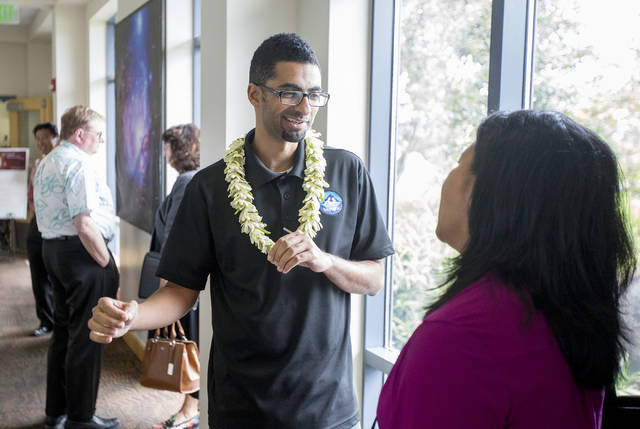A Hilo physician-training program has expanded. ADVERTISING A Hilo physician-training program has expanded. University of Hawaii’s John A. Burns School of Medicine announced last week that it plans a residency rotation in obstetrics and gynecology via a partnership with Bay
A Hilo physician-training program has expanded.
University of Hawaii’s John A. Burns School of Medicine announced last week that it plans a residency rotation in obstetrics and gynecology via a partnership with Bay Clinic and Hilo Medical Center, which already hosts primary care medical residency.
After medical school, new physicians enter specialty training — a “residency” — for at least another three years. Residents train under the direction of specialists in fields such as family medicine, OB/GYN, psychiatry, surgery or anesthesiology.
OB/GYNs manage female reproductive health and pregnancy. Planners hope the new residency rotation will encourage physicians who train on the Big Island to consider staying permanently to help ease the physician shortage.
Worrying aloud about the shortage has become common.
“I’m really excited about today,” Mayor Harry Kim said Friday during a luncheon to celebrate expansion of the program. “It’s almost like a culmination of frustration in the medical profession.”
Harold Wallace Jr., Bay Clinic CEO, said Bay Clinic’s proposal for the OB/GYN residency rotation was “to make sure that we were going to fill the gaps.”
It can take years to fill a vacancy, he said.
“We’re not just looking for one physician. We’re looking for a pipeline,” Wallace said.
Those tackling the shortage hope a second specialty is a step toward many more.
“Family physicians are just one of the specialists that are needed,” said Dr. Linda Rosen, corporate CEO of Hawaii Health Systems Corporation. The Big Island also needs dermatologists, endocrinologists, pediatricians, allergists, hospitalists, family physicians, neurologists, cardiologists, lung specialists and internal medicine physicians.
Kurt Corbin, chairman of the East Hawaii Regional Board of Hawaii Health Systems Corporation, said the new OB/GYN residency rotation “is a first step in addressing the physician shortage.” It will start as an elective and evolve into a medical school requirement.
The goal, Corbin said, is “not just to create conversation, but to create tangible results.”
Dr. Kareem Khozain from the John A. Burns School of Medicine’s Department of Obstetrics and Gynecology will practice at Bay Clinic and take residents under his wing, becoming the first paid JABSOM faculty member on the Big Island.
Hilo Medical Center CEO Dan Brinkman said physicians tend to stay where their residency training took place.
They say, “‘I like this,’ and then stay,” he said. “It fits logically.”
Planners who met during Friday’s luncheon at the ‘Imiloa Astronomy Center said they hope Hawaii-born students will consider medical school and related fields.
“If we’re going to recruit to the island, it’s really best to work with the folks who have grown up here,” said Dr. Jerris Hedges, medical school dean. Physicians considering rural practice, he said, tend to worry they’ll need help but won’t have access.
But the Hilo residency efforts can offset the worry, Hedges said, because physicians in residency training will have personal connections to the medical school.
Residents will assist mothers through the birth process at Hilo Medical Center, which will become a Neighbor Island residency training site.
Dr. Ian Ebesugawa and Dr. Melissa Kuwahara (a father-daughter team) practice on the Big Island and expect to join the university as faculty. In the fall, they will join Khozain to create a triad of JABSOM OB/GYN staff.
“We need to try and get the local kids who want to go to medical school,” Ebesugawa said. “Because they are the ones that most likely want to come home.”
Dr. Mark Hiraoka, JABSOM residency program director, said data shows “physicians have a higher likelihood of staying in the area that they trained in, and it’s even higher in the area that they trained last.”
“It clearly does work,” he said. “Our department’s hoping that this will maybe be a first of many.”
Surgery and psychiatry are the next two potential programs Hilo could see, with Hilo Medical Center becoming a potential surgery residency spot.
“We don’t have a neurology residency program in the state at all,” Hiraoka said. “You’ll find whatever residency program we don’t have, those are our biggest needs.”
Dr. Virginia Pressler, state Department of Health director, attended the luncheon and said the Big Island program is “a perfect example of what we need to do statewide.”
She hopes to better serve rural areas by “being creative in how we can actually bring care to the people of Hilo.”
Tongue-in-cheek comments were common during the luncheon, with a grain of possibility in each one.
“I said to myself, ‘Today the residency program, tomorrow the medical school,” Kim said.
Email Jeff Hansel at jhansel@hawaiitribune-herald.com.



